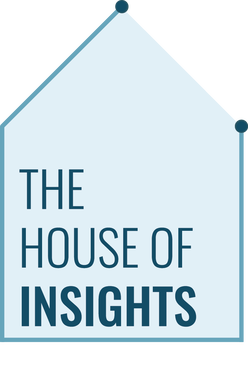 Over the years, the amount of data accessible to marketers has been growing substantially. And this will continue for a while. However, with the growing amount of accessible data, the difficulty in utilizing it and the aggravation it brings has also been growing. This brought a new era: the era of creativity. Previously published on Research World More data ≠ more insight ≠ better ideas
The idea was once that the more data we can collect, the better decisions we can make, and new directions would become clear providing there was enough data. However, we’ve been progressively realising that the era of data has not been delivering on our expectations. 4 years ago, Angela Hausman, a former Associate Professor of Marketing at Howard University, noticed that big data was getting more and more bad press. In her blogpost ‘Is Big Data Creating Big Problems for Marketing’ she concludes that data often gets in the way of doing basic marketing and squeezes out creativity. And the notion that more data does not lead to better decisions is nothing new. What is the era of creativity? In this era, companies based on a bold idea can become disruptive players in the least expected categories. Just think of Airbnb and Uber, but even on a smaller scale disruption is all around us. The new economic reality combines hyper-competition, ever faster product lifecycles and highly empowered consumers. For the companies that want to succeed this will change the game rules forever, and a new paradigm for business is needed to meet these challenges. We are at the age where creativity wins. In the Era of creativity new and original ideas are the central imperative for companies to achieve sustainable business success. (definition according to AD Little) Creative ideas are essential to find new disruptive customer solutions, to build or maintain a competitive advantage, or to defend against disruptive competitors. Digital technology has been a major catalyst, enabling many innovations and lowering entry barriers. But it’s not the only facilitator. Over the years, companies have become better at embedding creativity in newer, more agile ways of working. Creativity in COVID times The past few months have shown us that circumstances outside the business ecosystem can be a cause for disruption. Facing shutdown, many companies have found creative ways to continue their activities in an entrepreneurial way. We’ve witnessed companies making changes we thought couldn’t have happened, even with necessary infrastructure already available. Think of bed manufacturer Auping that within weeks changed their business into the production of mouth masks. To be prepared for more protectionism and increased international tensions, companies must be ready for unexpected disruption more than ever. Creativity is an essential skill needed for resilience. From data to creative ideas So how does data fit into the creative era? The more data, the more difficult it is to extract insights from it. And translating a higher amount of data into better creative solutions has proven to be even harder, despite having better tools to deal with all this data (i.e. Artificial Intelligence). We need something else. We need creativity to turn this data into action. Data is just numbers and to make use of it, and to truly understand consumer motivations and base your next steps on this understanding creativity is required. Without a creative mindset turning the insights into novel ideas is impossible. Creativity is an indispensable ingredient in the mix of capabilities and skills required to successfully translate data into insight and then into creative ideas for new products concepts and communication. Is market research really needed?A while ago we were at a meeting of start-ups who were looking into raising funds among investors. Our goal was to find out whether they needed market research and our conclusion was: they don’t. Why? Because they understand their target audience as they talk to their customers regularly. They always have one eye open to discover new developments and opportunities and they make sure they have all the data they need. And only the data they need, nothing more. But they have something else going for them. Because the companies are small and flexible, they can make fundamental changes to their business rapidly, which allows them to operate successively in the era of creativity. Slower, less creative organisations are losing the game. Compensating for the lost connection In larger and older organisations, the connection with the target group is often lost. The work of the CMI (Consumer Marketing Insights) department is one way to compensate for this. Traditionally, market researchers start with collecting data, then turn it into information (graphs and figures) and then into knowledge (what drives purchase behaviour in a certain category). To date, everything goes smoothly and the CMI department usually does a fine job. But this information must also be transformed into insights that will lead to actions. Who is responsible for this crucial step? Market researchers often look at the marketers and think they have delivered the foundations for the required insights. Marketers often only see information, not insight and they struggle to make use of it loosing valuable time. Translating knowledge into insight is the most difficult step in the process and modern-day insight professionals focus on this step, making sure they deliver insight, not merely information. From then on, often other people in the organisation (or external, like the Design Thinking Consultants), take over. A new role for the CMI manager, facing internal competition The role of CMI manager goes beyond generating insights and the era of creativity makes this role even broader. They have the responsibility of implementing insights, making sure they are the base for important decisions and the right actions. In this area we have seen a rise of agencies focusing on Design Thinking where they simply take over a part of the responsibility of the CMI departments. On top of that, there is the rise of UX and service design researchers who are having their own conversations with consumers to feed into their test, learn, and release approach. They are mostly left to their own devices, as their needs are specific and different from mainstream research. But traditional CMI departments often forget to take the role of coordinator of all customer feedback, which may lead to different types of research being scattered across the organisation. And this effectively leads to a devaluation of the role of CMI. Taking back control Taking back control also requires business savviness. You need to be able to look around and understand what kind of decisions and actions are possible and desirable. Anyone working in CMI should fully understand the problem in the relevant context and the situation in which decision makers are operating. It means liaising with decision makers and building internal networks and making sure that insights are being considered and form a base for new ideas and solutions. It also means adding creativity to the collected data. Getting people to listen, by presenting insights in a meaningful and inspiring way that encourages action. It means playing an active role in idea generations based on these insights but also in the implementation of these ideas into the business by making sure the right people are aligned. The CMI manager in the era of creativity plays a pivotal role in developing a culture that fosters creativity. People working in CMI should not leave the task of generating insights and creating new ideas and concepts to the marketers. Instead, they should take them by the hand and lead the way. Being a leader of change, the CMI manager will no longer be judged on the quality of the insights but they will be judged on the impact of the implementation of those insights. New skills required In order to be successful in the new era of creativity, CMI managers need to work on a number of essential skills and areas that may be out of their comfort zone but can be learned.
Mastering these skills will not only make the CMI manager more successful and impactful. It will also broaden the range of tasks and responsibilities. But most of all, it will make the job more fun and meaningful. Sources:
2 Comments
10/11/2022 02:53:25
Throw contain catch.
Reply
Leave a Reply. |
Our blogsOn this page the partners of the House of Insights share their ideas, visions and thoughts. Feel free to comment! Categories |
Building future proof Insights teams that drive business growth.
|
|
